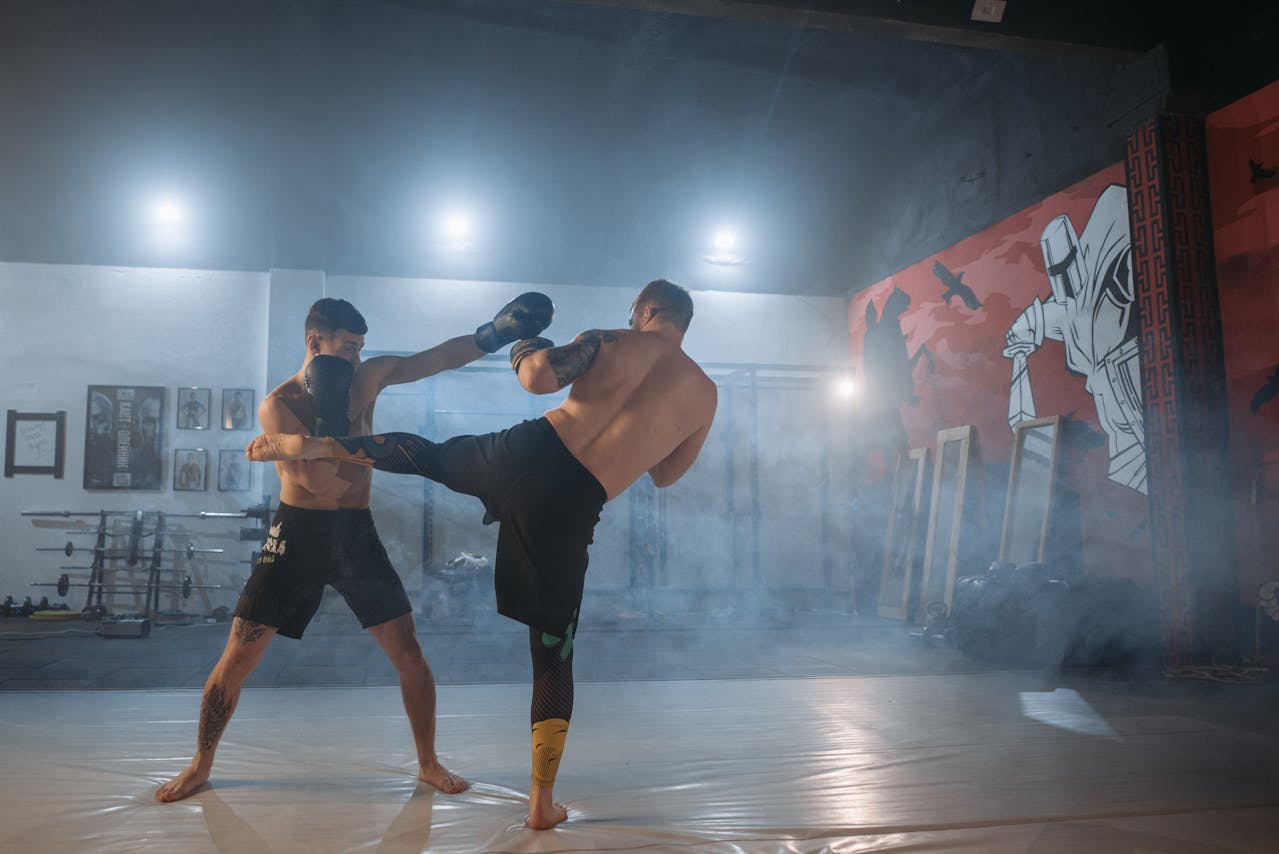Note that iPhone devices from Mainland China aren’t eSIM compatible. Also iPhone devices from Hong Kong and Macao aren’t compatible (except for iPhone 13 Mini, iPhone 12 Mini, iPhone SE 2020 and iPhone XS)
Muay Thai fights are an electrifying display of skill, power, and tradition. Known as the “Art of Eight Limbs,” this combat sport allows fighters to strike with their fists, elbows, knees, and shins, making it one of the most dynamic and intense martial arts in the world. Whether held in the legendary stadiums of Thailand or on international stages, Muay Thai bouts showcase not just raw power but also strategy, endurance, and deep-rooted tradition. From ceremonial Wai Kru dances to high-stakes knockouts, every fight is a testament to the warrior spirit that defines Muay Thai.
From Battlefield to Spectator Sport
Muay Thai’s roots can be traced back to the Sukhothai Kingdom in 13th-century Thailand, where it was developed as a form of hand-to-hand combat for soldiers. This ancient martial art, initially known as Muay Boran, was designed for warfare, utilizing strikes from fists, elbows, knees, and shins. Over time, as Thailand entered periods of peace, Muay Thai transitioned from a battlefield necessity to a celebrated sport, becoming a central part of festivals and cultural events. The legendary story of Nai Khanom Tom, a fighter who defeated nine Burmese opponents in succession, highlights its historical significance.
Influence of British Boxing on Muay Thai
In the early 20th century, British boxing began to influence Muay Thai, leading to the adoption of modern rules and equipment. Fighters moved from using hemp ropes around their hands to wearing padded gloves, and matches began taking place in boxing rings with timed rounds. These changes made the sport more accessible and safer, paving the way for its evolution into a global phenomenon. While incorporating these updates, Muay Thai retained its unique identity, including the Wai Kru Ram Muay ritual performed before each fight.
The Role of Muay Boran in Modern Muay Thai
Muay Boran, the predecessor of Muay Thai, remains an integral part of the sport’s identity. While many of its more dangerous techniques have been excluded from modern competitions, its principles continue to influence training and fighting styles. Today, Muay Boran is practiced as a traditional art form and serves as a reminder of Muay Thai’s deep connection to Thailand’s history and culture. Its legacy lives on in the techniques, rituals, and respect for discipline that define the “Art of Eight Limbs.”
Understanding the Eight Limbs of Muay Thai
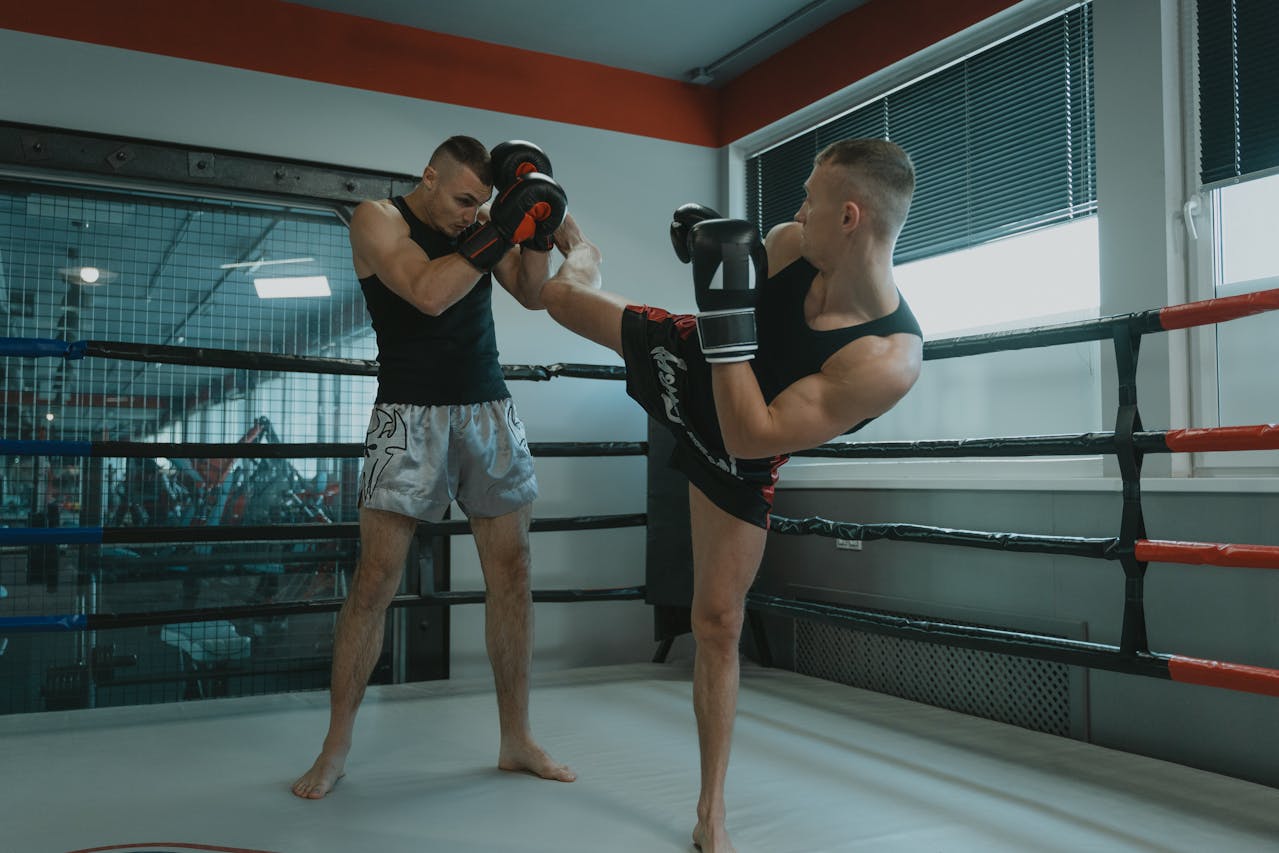
The Role of Fists and Elbows in Combat
Muay Thai’s unique identity as the “Art of Eight Limbs” comes from its use of fists, elbows, knees, and shins as striking tools. Fists and elbows, in particular, are vital for close-range combat. While fists deliver powerful punches to wear down an opponent, elbows are sharp and devastating, often used to cut or stun. Fighters train extensively to perfect their hand speed, accuracy, and the ability to transition seamlessly between punches and elbow strikes. This combination makes the upper limbs a dynamic weapon in any bout.
Knees and Shins as Powerful Weapons
The lower limbs in Muay Thai are equally important, with knees and shins providing both offensive and defensive capabilities. Shins are conditioned through rigorous training to deliver lethal kicks and block incoming strikes. On the other hand, knees are often used in the clinch, where fighters grapple to control their opponent’s posture. A well-placed knee strike can target the ribs, stomach, or even the head, making it a game-changer in fights. Shin conditioning is a hallmark of Muay Thai training, emphasizing durability and precision.
Strategic Use of All Eight Points
What sets Muay Thai apart is how it integrates all eight points of contact into a cohesive fighting style. Fighters learn to combine strikes from their fists, elbows, knees, and shins to create unpredictable and versatile attacks. This strategy not only overwhelms opponents but also opens up opportunities to exploit defensive gaps. Training focuses on timing, distance management, and adaptability, ensuring that every “limb” can be used effectively in any situation.
Get Ready For Your First Muay Thai
Stay online in Thailand with instant activation, and enjoy your first Muay Thai.
Muay Thai’s brilliance lies in its balance of power and strategy. By mastering the eight limbs, fighters embody a martial art that is as beautiful as it is effective.
Training and Techniques in Muay Thai
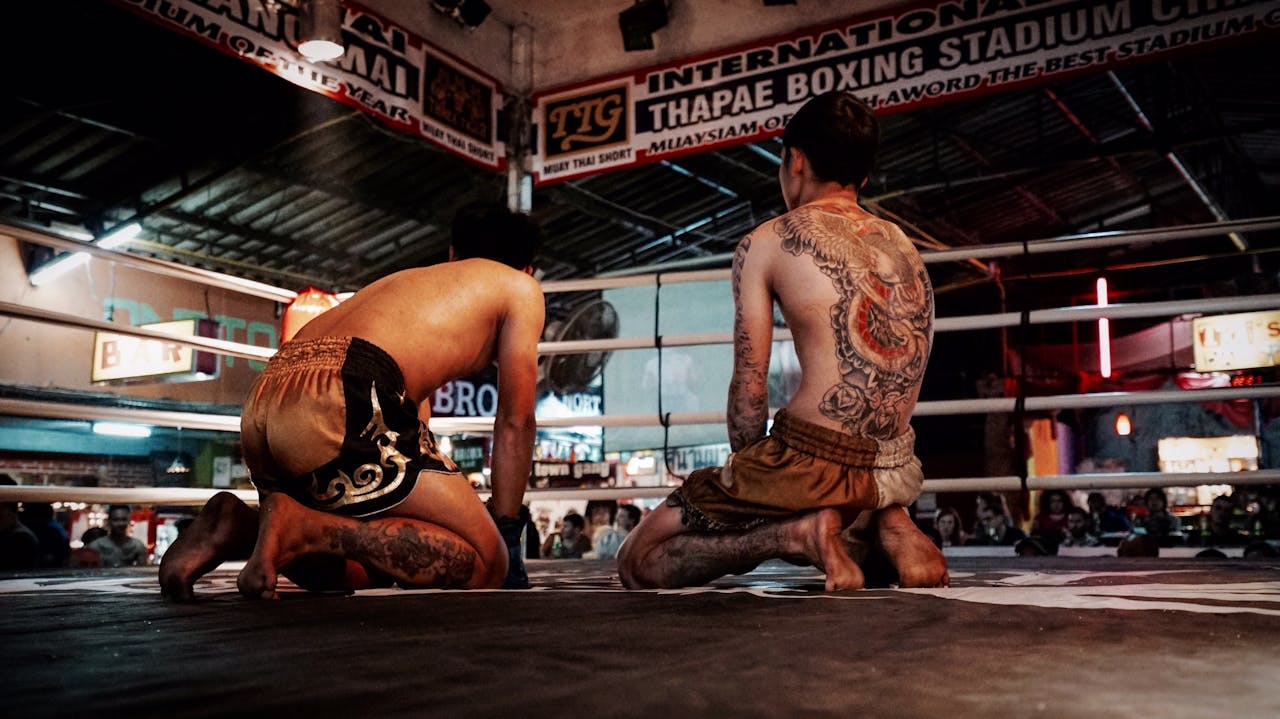
The Importance of Clinching and Sweeps
Clinching and sweeps are cornerstones of Thai boxing techniques. A strong clinch allows fighters to control their opponent’s movements, setting up opportunities for knee strikes or throws. Sweeps, on the other hand, are about balance and timing—executed correctly, they can completely shift the momentum of a fight. For beginners, mastering these requires patience and consistent practice, as they demand both physical strength and mental focus.
Building Strength and Endurance
Muay Thai training tips often emphasize the need for a solid foundation in strength and endurance. Fighters typically follow rigorous routines that include running, skipping rope, and bodyweight exercises like push-ups and sit-ups. Here’s a simple breakdown of a daily training session:
- Warm-Up: 15-20 minutes of running or skipping.
- Technique Drills: Practicing punches, kicks, and combinations.
- Bag Work: 3-5 rounds of heavy bag training.
- Strength Training: Core exercises, weightlifting, or resistance bands.
- Cool Down: Stretching to improve flexibility.
Mastering Striking Combinations
Striking combinations are where the art of Muay Thai truly shines. Fighters blend punches, kicks, elbows, and knees in fluid sequences to overwhelm their opponents. A typical combination might look like this:
- Jab-Cross to close the distance.
- Left hook to the body.
- Right roundhouse kick to finish.
Practicing combinations on pads or with a partner helps build muscle memory and improves reaction time. Consistency is key—the more you repeat these movements, the more natural they will feel in a fight.
Muay Thai isn’t just about brute force—it’s a mix of strategy, timing, and precision. Every strike, clinch, and sweep has a purpose, making it as much a mental game as a physical one.
Cultural Significance of Muay Thai in Thailand
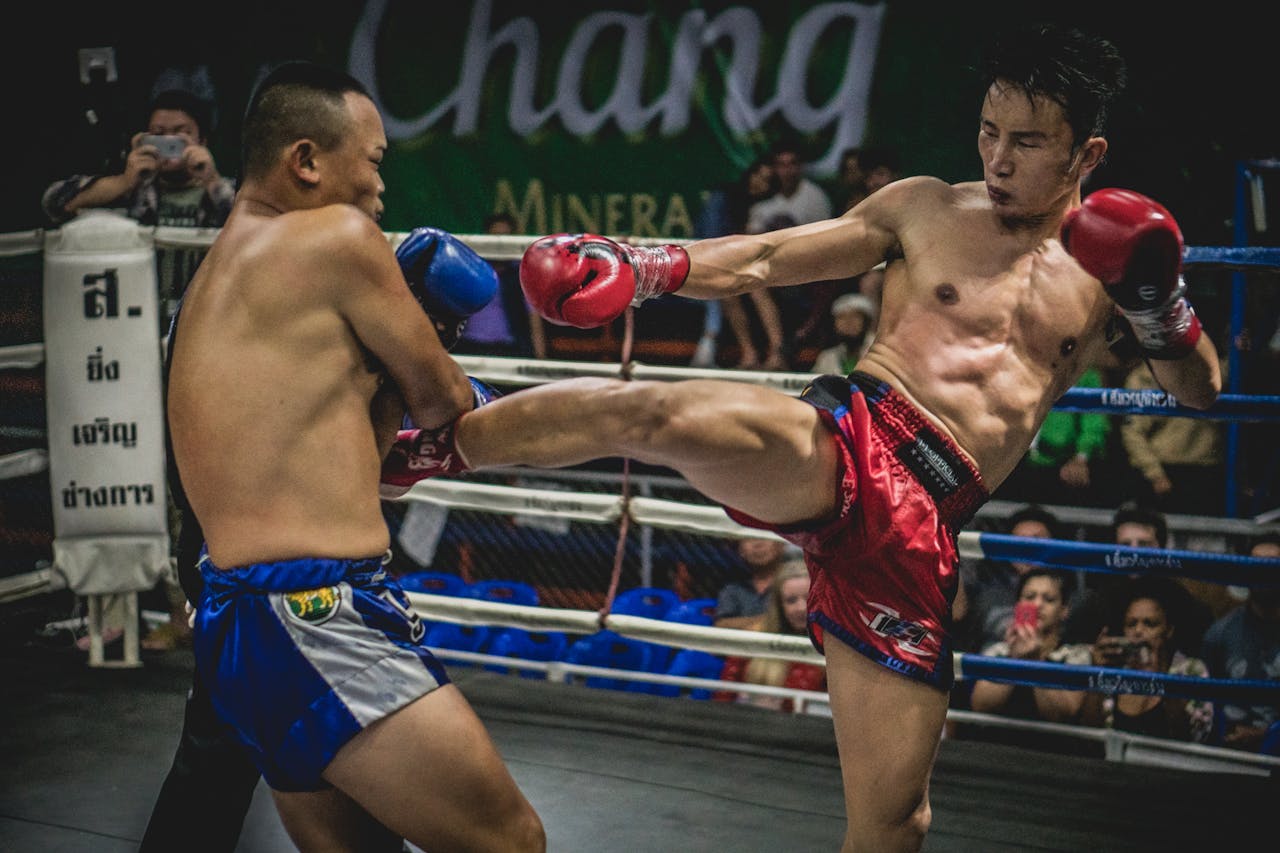
The Wai Kru Ram Muay Ritual
The Wai Kru Ram Muay is more than just a pre-fight tradition; it’s a heartfelt tribute to a fighter’s teachers, ancestors, and the art itself. Fighters perform this dance before every match, accompanied by traditional Sarama music. It’s a way to show respect and focus their mind before stepping into the ring. The movements are graceful yet deliberate, blending spirituality with the physicality of Muay Thai.
Muay Thai as a National Sport
Muay Thai isn’t just a sport in Thailand—it’s a national treasure. Its roots stretch back to the Sukhothai dynasty, where it began as a form of military training. Over time, it evolved into a regulated sport, complete with rules and protective gear. Today, it’s celebrated across the country, with iconic stadiums like Lumpinee and Rajadamnern hosting matches that draw both locals and tourists. It’s not just about fighting; it’s about preserving a piece of Thai identity.
Integration of Tradition and Modernity
While Muay Thai has embraced modern elements like padded gloves and timed rounds, it hasn’t lost its traditional soul. Fighters still wear the Mongkhon (headpiece) and armbands, and rituals like the Wai Kru remain integral. This blend of old and new keeps the sport relevant while honoring its rich history. It’s a perfect example of how Thailand merges its cultural past with the present.
The Global Popularity of Muay Thai
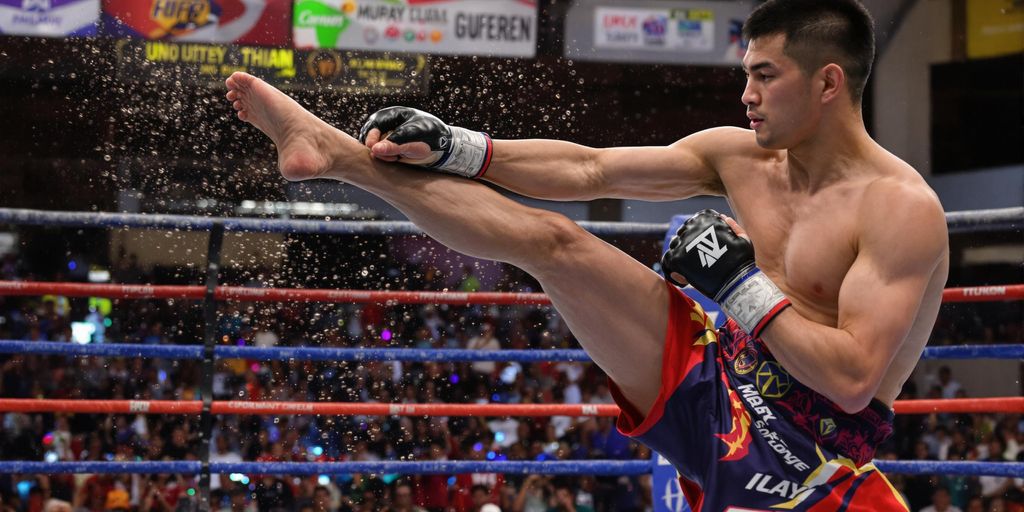
Muay Thai in Mixed Martial Arts (MMA)
Muay Thai has become a cornerstone in the world of MMA, thanks to its dynamic striking techniques. Fighters often incorporate elbows, knees, and clinching into their arsenal, giving them a versatile edge in the cage. Many MMA champions credit their success to Muay Thai training, which emphasizes precision, timing, and adaptability. This martial art’s influence is evident in the way modern MMA fighters blend traditional Muay Thai with other disciplines like Brazilian Jiu-Jitsu and wrestling.
Fitness Benefits of Muay Thai Training
For those not looking to step into the ring, Muay Thai offers incredible fitness benefits. It’s a full-body workout that combines cardio, strength, and flexibility training. Here’s what you can expect from a typical session:
- High-intensity drills, like pad work and bag strikes, to boost cardiovascular health.
- Core-strengthening exercises, such as knee strikes and clinching.
- Improved coordination and balance through dynamic movements and footwork.
Whether you’re a beginner or a seasoned athlete, Muay Thai provides a fun and engaging way to stay in shape.
Live Stream Your First Muay Thai
Experience hassle-free connectivity wherever you go.
Muay Thai as a Self-Defense Discipline
Beyond fitness and sport, Muay Thai is a practical self-defense system. Its techniques are straightforward yet highly effective in real-world scenarios. Practitioners learn to:
- Strike with power and precision using all eight limbs.
- Defend against attacks with blocks, parries, and evasive footwork.
- Use clinching to control an opponent and neutralize threats.
Muay Thai teaches you more than just fighting—it builds confidence and mental resilience, making it a valuable skill for anyone, regardless of age or experience.
The Art of Eight Limbs in Competitive Fighting
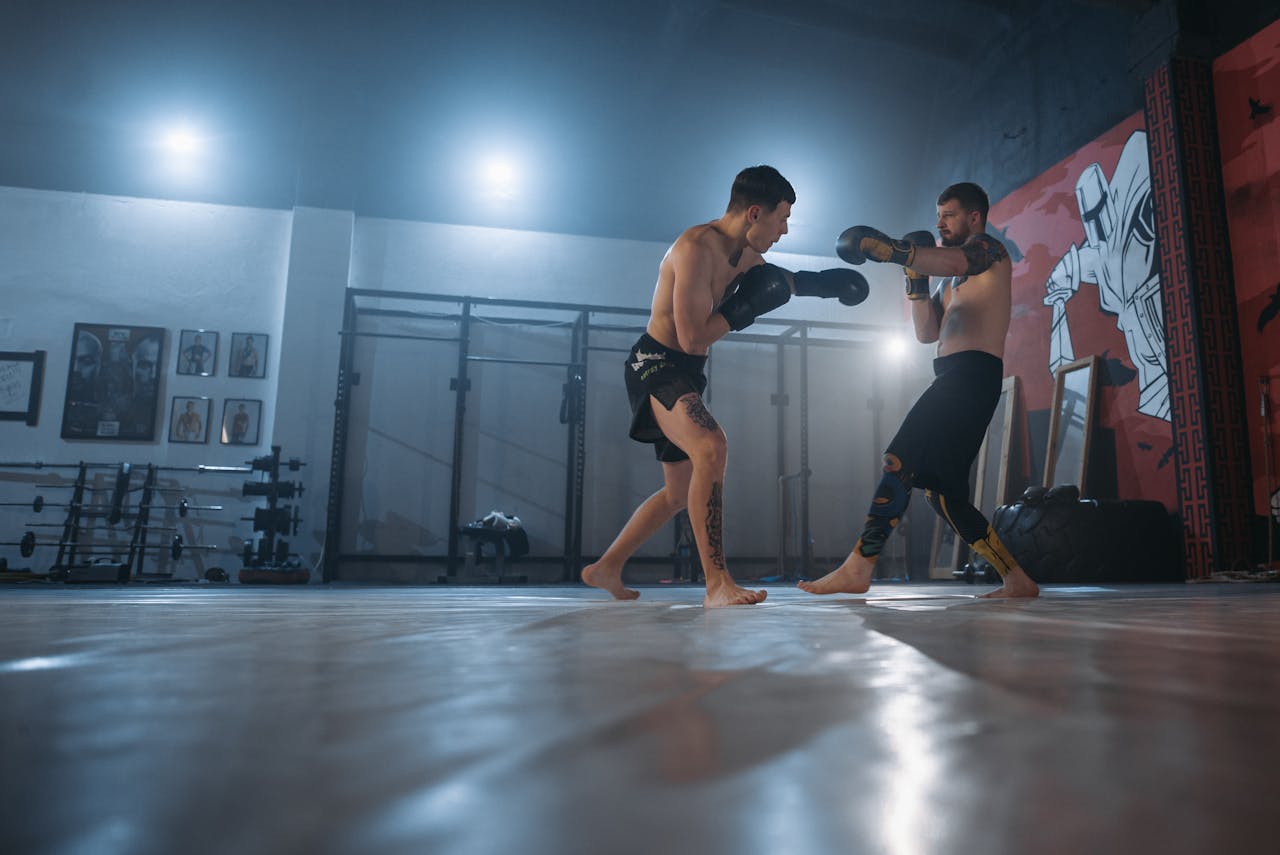
Rules and Regulations in Modern Muay Thai
Modern Muay Thai has evolved significantly, with rules designed to balance safety and tradition. Fighters are required to wear gloves, mouthguards, and groin protectors to minimize injuries. Matches are usually divided into five three-minute rounds, with a two-minute rest period in between. Judges score based on criteria such as effective striking, defense, and ring control. What sets Muay Thai apart is its allowance for the use of elbows, knees, and clinching techniques, making it a dynamic and versatile sport.
Strategies for Offense and Defense
In Muay Thai, strategy is everything. Fighters must master the art of timing and distance to land strikes effectively while avoiding counterattacks. Offensive strategies often include combinations of punches, kicks, elbows, and knees, aimed at overwhelming the opponent. On the defensive side, techniques like blocking, parrying, and using the clinch to neutralize attacks are key.
Here’s a breakdown of common strategies:
- Offense:
- Use feints to mislead the opponent.
- Combine strikes to create openings.
- Target the legs to limit mobility.
- Defense:
- Maintain a strong guard to block strikes.
- Use footwork to evade attacks.
- Employ clinching to control the fight’s pace.
The Role of Mental Toughness in the Ring
Mental toughness is just as important as physical skill in Muay Thai. Fighters must remain focused and composed, even when under pressure. Visualization, meditation, and breathing techniques are often used to prepare mentally for a match. Confidence in one’s abilities can make the difference between victory and defeat.
Entering the ring is not just a test of skill but a challenge of willpower and resilience. Each fight is a battle of endurance, strategy, and mental fortitude, showcasing the true essence of Muay Thai.
Health and Fitness Benefits of Practicing Muay Thai
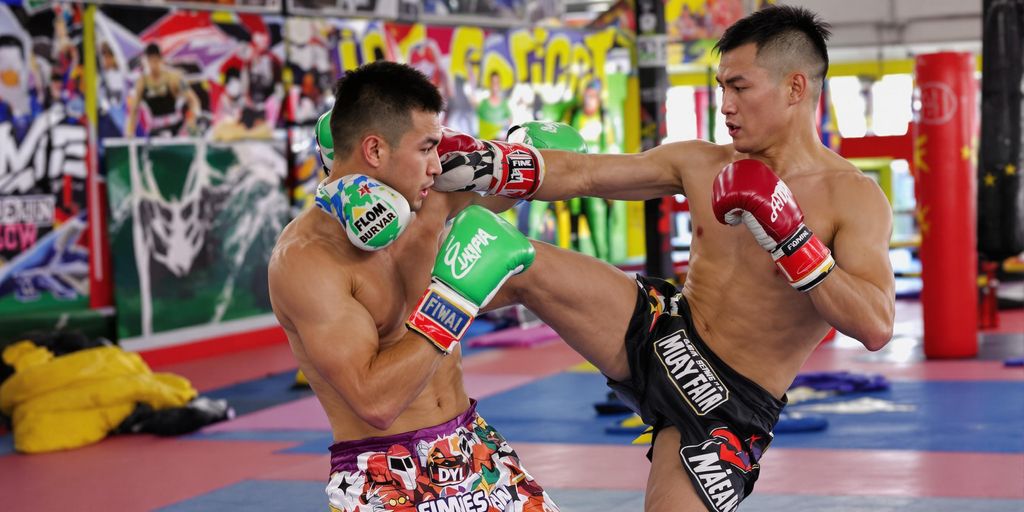
Cardiovascular and Strength Training
Muay Thai is a killer workout for your heart and muscles. With non-stop movement, it keeps your heart pumping and boosts endurance. Plus, the striking techniques—punches, kicks, and knees—engage your entire body, building lean muscle and improving overall strength. It’s like a full-body gym session packed into one training session.
Improving Flexibility and Coordination
The dynamic movements in Muay Thai push your body to stretch and move in ways you didn’t think possible. Regular training improves flexibility, making your kicks higher and your strikes more fluid. Not to mention, the sport sharpens your hand-eye coordination as you learn to time your attacks and defenses perfectly.
Mental Health Advantages of Muay Thai
Beyond the physical perks, Muay Thai is a game-changer for your mind. It relieves stress, boosts confidence, and gives you that sweet endorphin rush post-training. Many practitioners say it’s their therapy in motion. Whether you’re hitting the bag or sparring, it’s hard to stay stuck in your head when you’re fully focused on the moment.
Muay Thai for fitness isn’t just about looking good—it’s about feeling strong, inside and out. The discipline it builds carries over into every part of your life.
Quick Glance at the Benefits
- Burns calories and helps with weight management
- Improves stamina and cardiovascular health
- Builds strength and tones muscles
- Enhances flexibility and balance
- Boosts mental clarity and reduces stress
If you’re considering a way to stay active and healthy, Muay Thai training is worth a shot. And if you’re planning to train while traveling, staying connected is key. Check out Voye Global’s Thailand eSIM for reliable internet access during your adventures.
Practicing Muay Thai offers amazing health and fitness benefits. It helps improve your strength, flexibility, and endurance. This martial art is not just about fighting; it’s also a great way to relieve stress and boost your mood.
Muay Thai – Epic Thailand Fight
Muay Thai isn’t just a sport; it’s a way of life that blends discipline, culture, and physical endurance. Whether you’re stepping into the ring, training for fitness, or simply appreciating its rich history, the “Art of Eight Limbs” offers something for everyone. It’s a reminder that strength isn’t just about power—it’s about balance, strategy, and heart. So, whether you’re a seasoned fighter or a curious beginner, Muay Thai invites you to embrace its challenges and rewards, one strike at a time.
Seamless Mobile Data Everywhere







